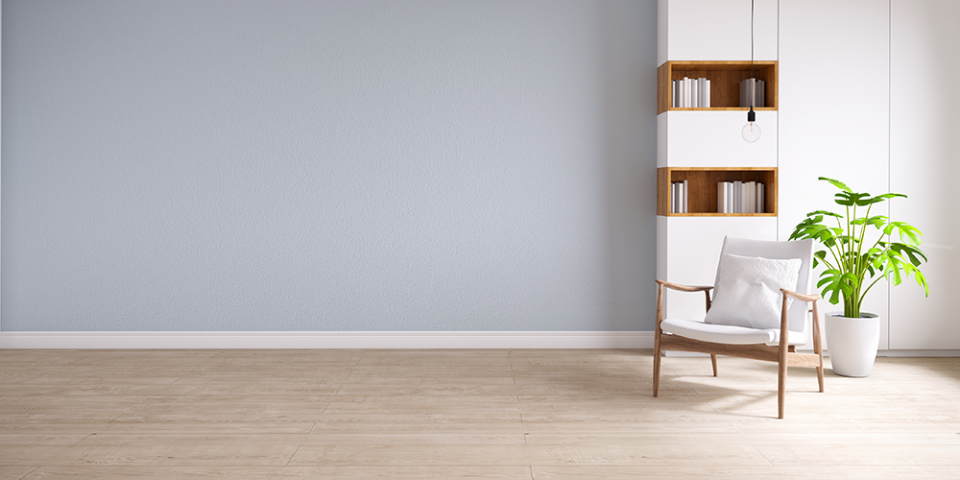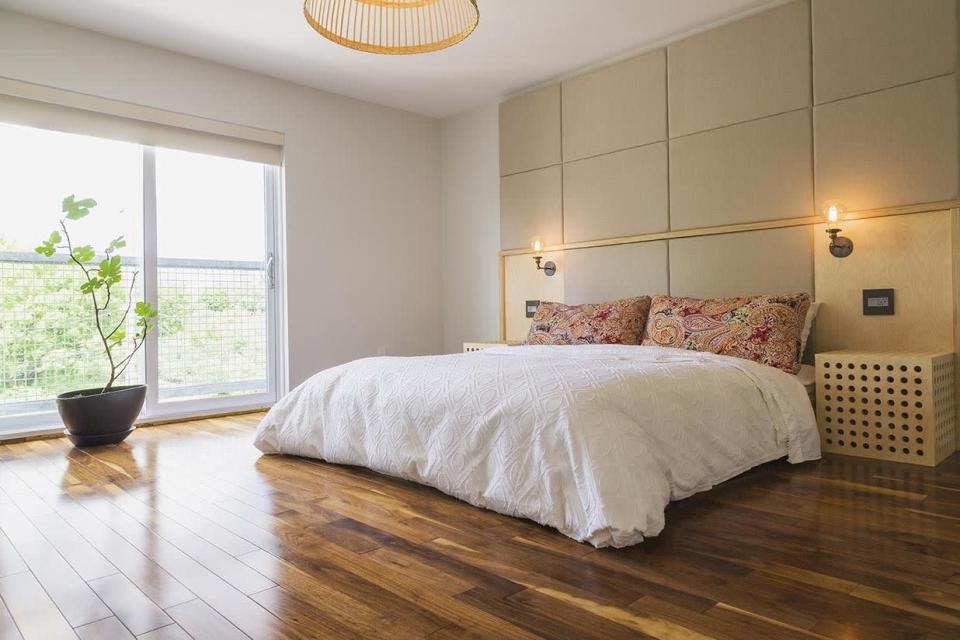A Home Improvement Expert Reveal the Best Hardwood Flooring

“Hearst Magazines and Yahoo may earn commission or revenue on some items through the links below.”
Hardwood flooring might be the most timeless of building materials. Elegant historic homes often feature it, as so do many of the nicest new homes being built today. No wonder installing hardwood floors is such a popular home improvement project, adding warmth and beauty to any residence—and value, too. In fact, the upgrade has one of the highest returns on investment (106 percent, to be exact), according to the National Association of Realtors’ latest Remodeling Impact Report.
But with more than 50 species to choose from, how do you know where to begin? Through decades of testing and reviews at the Good Housekeeping Institute, our experts have a firm handle on the best types of hardwood flooring available today. Once you sort through the species, read on for expert advice on other factors that impact the look and performance of hardwood flooring, including method of construction, finish and maintenance needs.
Oak

This is by far the most popular species of hardwood flooring. “At least 70 percent of the floors we put in are oak,” says Maria Ramos, head estimator at All Boro Floors, a New York City-based company specializing in the installation and restoration of hardwood floors. Whether red or white oak, the species is durable, well-priced and its light hue means it can be stained virtually any color. “Oak also has a naturally strong grain pattern that masks abnormalities such as scratches, dents, nicks and other small flooring mishaps,” adds Agnieszka Wilk, CEO of Decorilla Online Interior Design, noting that many of her clients have high-traffic households with kids and pets that might make a mess of softer woods.
Maple

Like oak, maple is widely available and as a result a good choice for budget remodels. Not that it looks cheap or underperforms. Especially if you choose sugar maple, so named because it produces sap, the result will be an exceptionally dense, durable wood floor with a subtle, yet attractive grain parent. Maple’s tones range from creamy white to reddish brown, so in most cases you will be able to stain it just about any color.
Ash

If you’re looking for something different than oak or maple, but don’t want to go as far as an exotic hardwood from another continent, consider domestic ash. It’s even harder than oak, making it suitable for high-traffic areas. “It’s what baseball bats and axe handles are made of, so you know it’s resilient,” says Walter Lourie, an expert in sustainable, all-natural wood floors. He adds that the species is becoming more available, and hence cheaper because, sadly, many ash trees are being wiped out by the emerald ash borer, an invasive beetle from Asia. Like oak, ash has strong graining and light to gray color tones.
Walnut

Domestically grown Black Walnut is a popular choice with people who are looking for mid-tone wood floors, which tend to make a room feel warmer and cozier. Walnut’s grain pattern is mostly straight and open, but it can have some movement to it, depending on the cut. “It’s a gorgeous species,” says Lourie, “but supply is becoming tight, so it tends to be a lot more expensive than oak and ash.”
Cherry

Though nowhere near as popular as it was at the start of the century, cherry is making a comeback with homeowners who still want the luxurious look of dark floors. Manufacturers also tell us that the species is beginning to see new life as a retro-inspired, nostalgic choice in flooring. Another point in cherry’s favor: the domestic species resembles many exotic tropical hardwoods, which are particularly hard to come by these days because of global supply chain issues.
What’s the best place to buy hardwood flooring?
Hardwood flooring is primarily sold at home centers, specialty retailers and local mills. If you’re working with a contractor or installer, it probably makes sense to purchase your flooring through them, since they’ll get it at a lower professional rate. Be sure to leave plenty of lead time. “Like most things these days, the wood flooring industry is experiencing some challenges with the supply chain,” says Brett Miller of the National Wood Floors Association (NWFA). Adds Maria Ramos of All Boro Floors, “the lead time on pre-finished hardwood flooring is now up to 20 weeks, compared with the 8 to 10 weeks that used to be standard.” Here are five retailers to consider:
✔️ Home Depot: With some 2,300 locations nationwide, the biggest home center carries a wide range of flooring materials at competitive prices. Whether you want solid or engineered, you’ll find it at the Home Depot, along with various financing options and installation services.
✔️ Lowe’s: The country’s second biggest home center is another safe bet for all kinds of wood flooring. Its service offerings are even more robust, including in-home flooring measurements, design consults, professional installation and free shipping on flooring samples.
✔️ LL Flooring: Formerly known as Lumber Liquidators, LL Flooring has more than 400 locations across 47 states, plus an excellent website that makes it easy to find the right flooring and receive up to four free samples. In 2015, the company announced that it would stop selling flooring with phthalates; today its vendors are required to meet stringent GREENGUARD Gold certification standards for indoor air quality.
✔️ Floor & Décor: Though LL Flooring has the most locations, Floor & Décor sells the most flooring, so you’re guaranteed to find a wide selection of hardwood flooring at all price points. The site has an extensive library of virtual how-to clinics, for those looking to save by installing their flooring themselves.
✔️ Local mills: Buying direct from your local lumber mills cuts out the middleman, leading to potentially better prices. Many mills will let you come check out the manufacturing process, so you know exactly what you’re getting and also where the wood is sourced.
What’s the most durable hardwood flooring?
Durability is a factor of hardness, which is measured by a system called the Janka Scale. Brazilian walnut has an extremely high Janka score of 3,680, popular white oak has an average hardness of 1,360 and southern yellow pine is relatively soft with a Janka score of 870. If you’re looking for the most durable possible hardwood floor, pre-finished is the way to go, since the factory application is hard and stable, and often involves multiple coats. Keep in mind that other factors impact durability, including how the wood is cut and application of the finish coat.
Is pre-finished or unfinished hardwood flooring better?
The main reason to opt for unfinished flooring that will be stained and finished on-site is that it gives you total control over the color. That might be worth it if you are custom-matching new hardwood floors with existing ones in your home. Pre-finished wood tends to be stronger and you don’t have to worry about the fumes and off-gassing of on-site finishing.
Whichever way you go, you’ll have your choice of sheen on the finish. The lower the sheen, the less you’ll notice wear and tear. Matte and satin finishes offer the least shine. Semi-gloss finishes offer some shine and reflect some light. Gloss finishes reflect the most light, so they’re not ideal in high-traffic areas because they show scratches.
What else do I need to consider with hardwood flooring?
The same species of wood can end up looking very different depending on the manufacturing process, including grade and cut. Here’s what you need to know.
✔️ Grade is based on the physical characteristics of the wood.
-
Rustic grade will have a limitless number of knots in all sizes. There might also be cracks against the grain pattern. This flooring tends to be the cheapest. It can bring old-world charm to farmhouse and French-country designs.
-
Character grade will have some knots and color variation, but not to the extreme of rustic-grade flooring. It works well in many traditional-style homes.
-
Select grade will have some boards with small knots and cracks, while others will be free from imperfection. This grade tends to be the most versatile.
-
Prime grade will be almost entirely free of any visible knots, cracks or color variation. It might be worth splurging for this expensive flooring if you live in a contemporary-style home with crisp, clean lines.
✔️ Cut influences performance and price. There are three main choices:
-
Plain sawn (a.k.a. flat sawn) is the most common technique for cutting lumber. It results in a cathedral grain pattern with a lot of lateral movement, which might be an issue if there’s a lot of humidity variation in your home. Plain sawn flooring is the least expensive.
-
Quarter sawn is cut perpendicular to the growth rings, resulting in a wavier grain pattern. This flooring tends to be more dimensionally stable. It’s priced in the middle of the spectrum.
-
Rift sawn is the least common type of flooring, and therefore the most expensive. It produces the most waste, but the result is an exceptionally stable board or plank with the a very unique grain pattern.
You Might Also Like








